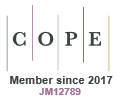A new species of Phryssonotus (Diplopoda: Synxenidae) from north-eastern New South Wales, Australia
Cuong Huynh A * and Anneke A. Veenstra
A * and Anneke A. Veenstra  A
A
A
Abstract
Phryssonotus borealis is a new synxenid species found in north-eastern New South Wales, Australia. This species differs from other Phryssonotus species by its white tergal scale trichomes and its genetic make-up.
ZooBank: urn:lsid:zoobank.org:pub:9BA52C7B-C1E3-421C-A37D-4A3D6FD39EEB
Keywords: 18S, COI, northern, parthenogenesis, phylogenetic analysis, scale trichome patterns.
References
Condé B, Nguyen Duy-Jacquemin M (1984) Diplopodes pénicillates de Papouasie et de Bornéo. Revue Suisse de Zoologie 91, 47-55.
| Crossref | Google Scholar |
Hall TA (1999) BioEdit: a user-friendly biological sequence alignment editor and analysis program for Window 95/98/NT. Nucleic Acid Symposium Series 41, 95-98.
| Google Scholar |
Huynh C, Veenstra AA (2017) Two new species of Phryssonotus (Diplopoda: Synxenidae) from southern and western Australia. Australian Journal of Zoology 65(4), 248-256.
| Crossref | Google Scholar |
Huynh C, Veenstra A (2018) Two new Lophoturus species (Diplopoda, Polyxenida, Lophoproctidae) from Queensland, Australia. ZooKeys 741, 133-154.
| Crossref | Google Scholar |
Huynh C, Veenstra AA, Likhitrakarn N (2023) First records of penicillate millipedes (Diplopoda, Polyxenidae) from Thailand, with descriptions of two new species. Zootaxa 5383(4), 514-536.
| Crossref | Google Scholar | PubMed |
Jones S (1937) On two new South Indian pselaphognathous Diplopods. Zoologischer Anzeiger 119(5–6), 138-146.
| Google Scholar |
Kumar S, Stecher G, Tamura K (2016) MEGA7: molecular evolutionary genetics analysis version 7.0 for bigger datasets. Molecular Biology and Evolution 33, 1870-1874.
| Crossref | Google Scholar | PubMed |
Meyer CP (2003) Molecular systematics of cowries (Gastropoda: Cypraeidae) and diversification patterns in the tropics. Biological Journal of the Linnean Society 79, 401-459.
| Crossref | Google Scholar |
Nguyen Duy-Jacquemin M (2006) Condexenus, a new genus of the millipede family Synxenidae (Diplopoda, Polyxenida) from Namibia. Norwegian Journal of Entomology 53, 237-248.
| Google Scholar |
Short M, Huynh C (2009) Phryssonotus novaehollandiae Silvestri, 1923: the sole Australian representative of the millipede Family Synxenidae. Soil Organisms 81, 695-700.
| Google Scholar |
Short M, Huynh C (2010) A technique for examination of diagnostic characters of penicillate millipedes. Memoirs of Queensland Museum: Nature 55, 231-234.
| Google Scholar |
Silvestri F (1923) Notizia della presenza del genere Synxenus (Myriapoda, Diplopoda) in Catalogna e descrizione di quattro species. Treballs del Museu de Ciències Naturals de Barcelona 4, 5-15.
| Google Scholar |


